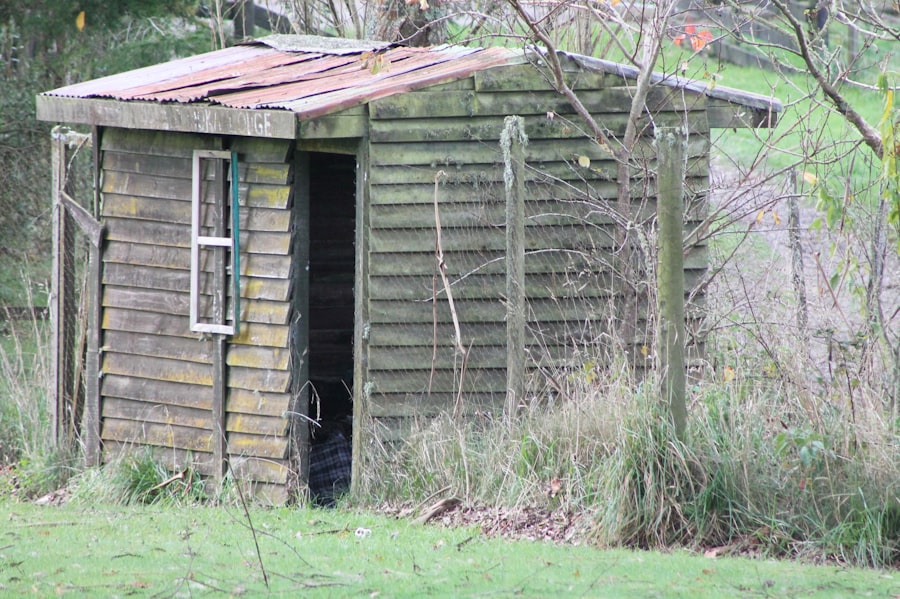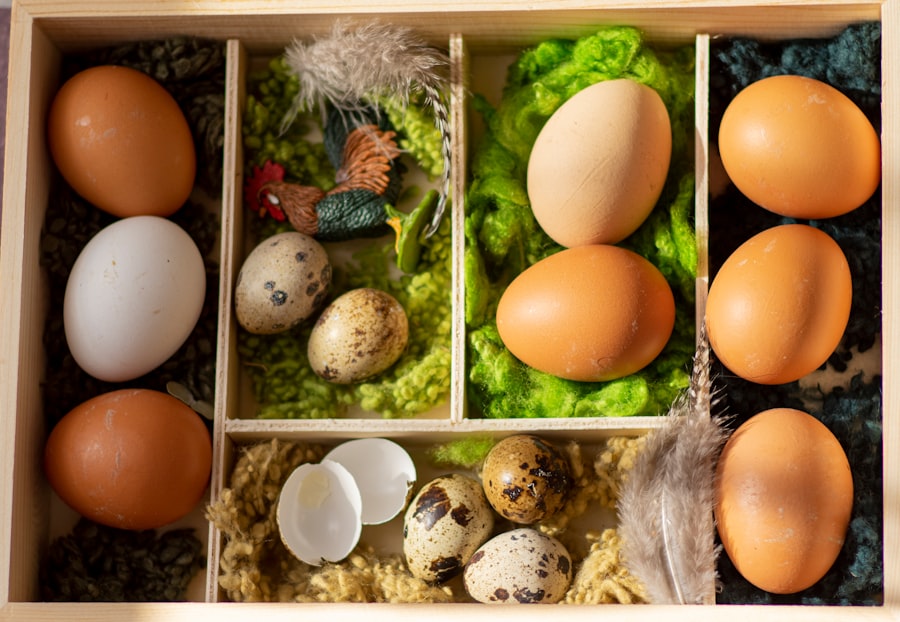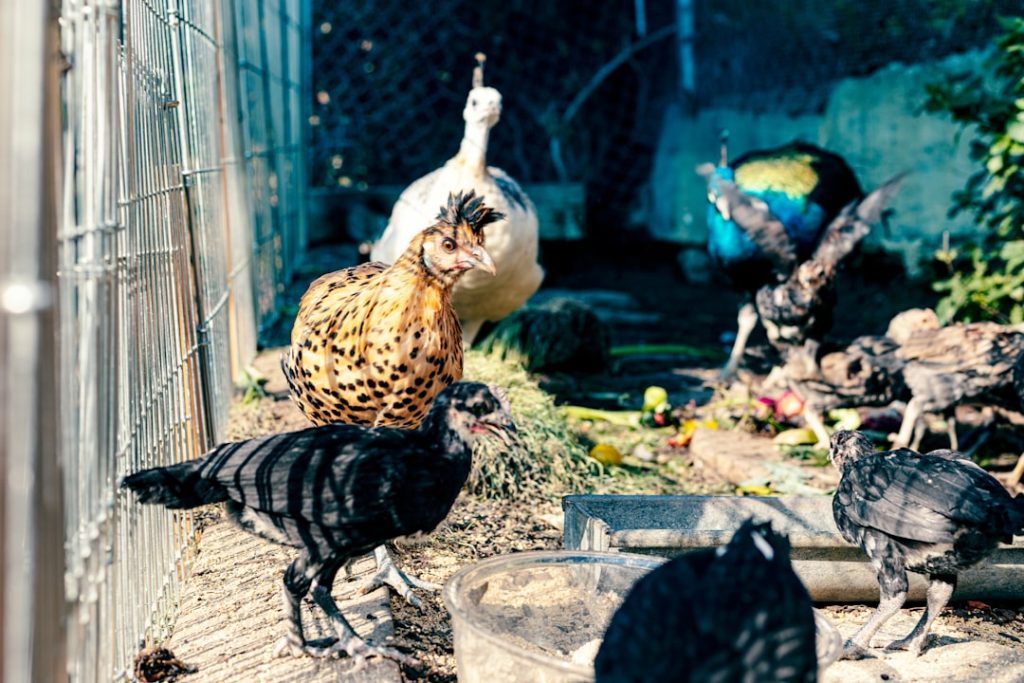When raising chickens, providing adequate space is essential for their health and well-being. The recommended space allocation is 2-3 square feet per chicken inside the coop and 8-10 square feet per chicken in the outdoor run. This ensures chickens have sufficient room to move, stretch their wings, and engage in natural behaviors like scratching and dust bathing.
Proper spacing also helps reduce stress and aggression within the flock, promoting a more harmonious and productive environment. When determining coop size, consider the number of chickens you plan to keep and any potential future expansion. A recommended starting point is 4-5 square feet per chicken inside the coop, allowing space for nesting boxes, roosting bars, and feeders.
It’s advisable to build a slightly larger coop than initially needed to provide flexibility and room for growth. For the outdoor run, aim for a minimum of 8-10 square feet per chicken to ensure adequate foraging and exercise space. Generally, providing more space than the minimum requirement is beneficial for the chickens’ overall well-being.
Table of Contents
- 1 Coop Design and Features
- 2 Nesting Boxes
- 3 Roosting Bars
- 4 Ventilation and Light
- 5 Outdoor Run
- 6 Predator Protection
- 7 FAQs
- 7.1 What are the ideal housing requirements for keeping chickens?
- 7.2 How much space do chickens need in their housing?
- 7.3 What kind of protection from predators is necessary for chicken housing?
- 7.4 Why is good ventilation important in chicken housing?
- 7.5 What are the considerations for nesting and roosting space in chicken housing?
- 7.6 How can chicken housing be designed for easy cleaning and egg collection?
Key Takeaways
- Adequate space is essential for the health and well-being of chickens
- Coop design should prioritize easy cleaning, predator protection, and adequate ventilation
- Nesting boxes should be designed to provide privacy and comfort for hens to lay eggs
- Roosting bars should be provided at varying heights to accommodate different chicken breeds
- Proper ventilation and natural light are crucial for a healthy coop environment
- An outdoor run should be spacious and secure, allowing chickens to forage and exercise
- Predator protection measures such as sturdy fencing and secure latches are essential for keeping chickens safe
Coop Design and Features
Protection and Ventilation
The coop should be well-insulated and provide protection from the elements, with a sturdy roof to keep out rain and snow. It’s also important to include windows or vents for ventilation, as well as adequate lighting to promote egg production and overall health.
Predator-Proofing and Layout
The coop should be predator-proof, with secure latches and hardware cloth to keep out unwanted visitors. In terms of layout, the coop should include nesting boxes for egg-laying, as well as roosting bars for the chickens to perch on at night. The nesting boxes should be located in a quiet, secluded area of the coop to provide privacy for the hens, while the roosting bars should be positioned higher up to encourage the chickens to sleep off the ground.
Accessibility and Storage
It’s also important to include easy access doors for cleaning and maintenance, as well as a secure storage area for feed and supplies. Finally, consider adding a run attached to the coop to give the chickens access to fresh air and outdoor space. By carefully considering these design features, you can create a coop that meets the needs of your flock while also being practical and easy to maintain.
Nesting Boxes

Nesting boxes are an essential feature of any chicken coop, providing a safe and comfortable space for hens to lay their eggs. When designing nesting boxes, it’s important to consider the size and placement in order to create an inviting environment for egg-laying. The general recommendation is to provide one nesting box for every 3-4 hens, with each box measuring around 12×12 inches and 12 inches deep.
This size allows enough room for the hen to comfortably enter and exit the box while also providing a cozy space for her to lay her eggs. In terms of placement, nesting boxes should be located in a quiet, secluded area of the coop to provide privacy for the hens. It’s also important to position the boxes off the ground to prevent eggs from getting dirty or damaged.
Additionally, consider adding curtains or dividers to create a sense of privacy and security for the hens while they are laying. By carefully designing and placing nesting boxes within the coop, you can create an inviting space that encourages regular egg-laying while also making it easy to collect eggs.
Roosting Bars
Roosting bars are an essential feature of any chicken coop, providing a comfortable and secure place for chickens to perch at night. When designing roosting bars, it’s important to consider the size and placement in order to create a suitable sleeping area for your flock. The general recommendation is to provide 8-10 inches of roosting space per chicken, with the bars positioned at least 2 feet off the ground.
This height helps to keep the chickens safe from predators while also encouraging them to sleep off the ground, which helps to keep them clean and healthy. In terms of material, wooden roosting bars are a popular choice due to their durability and comfort for the chickens’ feet. It’s important to use smooth, rounded bars that are at least 2 inches wide to prevent foot injuries and promote good circulation.
Additionally, consider adding removable droppings boards underneath the roosting bars to make cleaning easier and keep the coop tidy. By carefully designing and placing roosting bars within the coop, you can create a comfortable and secure sleeping area that promotes good health and well-being for your flock.
Ventilation and Light
Proper ventilation and lighting are essential components of a well-designed chicken coop, contributing to the overall health and productivity of your flock. Adequate ventilation helps to remove excess moisture, ammonia, and airborne pathogens from the coop, creating a healthier environment for the chickens. This can be achieved through windows, vents, or ridge caps that allow fresh air to circulate while preventing drafts.
It’s important to position ventilation openings high up in the coop to encourage good air flow without creating cold drafts at ground level. In terms of lighting, chickens require a consistent day-night cycle to maintain healthy egg production and overall well-being. Natural light is ideal, so try to position windows or skylights in the coop to maximize exposure to sunlight.
If natural light is limited, consider adding artificial lighting on a timer to ensure that the chickens receive at least 14-16 hours of light per day. This helps to stimulate egg production and maintain a regular laying schedule throughout the year. By carefully considering ventilation and lighting within the coop, you can create a comfortable and healthy living environment that supports the well-being of your flock.
Outdoor Run

Size and Space
An outdoor run is an essential feature of any chicken coop, providing chickens with access to fresh air, sunshine, and space to exercise. When designing an outdoor run, it’s important to consider size, security, and amenities in order to create a safe and enjoyable environment for your flock. The general recommendation is to provide at least 8-10 square feet per chicken in the outdoor run, allowing plenty of room for them to forage, dust bathe, and stretch their wings.
Security Measures
In terms of security, it’s important to use sturdy fencing with buried wire mesh to prevent predators from digging underneath. Additionally, consider adding a roof or netting over the top of the run to protect against aerial predators such as hawks or owls.
Providing Comfort and Shelter
It’s also important to provide shade and shelter within the run, such as trees or a covered area, to protect the chickens from extreme weather conditions.
A Safe and Enriching Environment
By carefully designing and securing an outdoor run for your flock, you can provide them with a safe and enriching environment that supports their physical and mental well-being.
Predator Protection
Protecting your flock from predators is a top priority when designing a chicken coop and outdoor run. Common predators include raccoons, foxes, coyotes, dogs, cats, weasels, hawks, owls, and snakes. To keep your chickens safe from these threats, it’s important to use sturdy materials such as hardware cloth or welded wire fencing with small openings (no larger than 1 inch) that are buried at least 12 inches into the ground around the perimeter of the coop and run.
Additionally, consider adding predator-proof latches on all doors and windows, as well as covering any openings with strong wire mesh or hardware cloth. It’s also important to regularly inspect the coop and run for signs of wear or damage that could compromise their security. By carefully considering predator protection measures when designing your chicken coop and outdoor run, you can create a safe and secure environment that gives you peace of mind while keeping your flock safe from harm.
In conclusion, designing a chicken coop involves careful consideration of space requirements, layout, features such as nesting boxes and roosting bars, ventilation and lighting, outdoor runs, and predator protection measures. By taking these factors into account when planning and building your coop, you can create a comfortable and secure living environment that supports the health and well-being of your flock while also making it practical and easy to maintain.
If you’re considering keeping chickens, it’s important to understand the ideal housing requirements for these birds. A helpful article on Poultry Wizard discusses the importance of a well-designed chicken coop for keeping chickens healthy and safe. The article provides valuable information on the size, ventilation, and layout of a chicken coop, as well as tips for portability and maintenance. For more information on housing requirements for poultry, you can check out the article here.
FAQs
What are the ideal housing requirements for keeping chickens?
The ideal housing for keeping chickens should provide protection from predators, adequate space for roosting and nesting, good ventilation, and easy access for cleaning and egg collection.
How much space do chickens need in their housing?
Chickens need a minimum of 2-3 square feet of space per bird inside the coop, and 8-10 square feet per bird in an outdoor run. More space is always better to prevent overcrowding and reduce stress.
What kind of protection from predators is necessary for chicken housing?
Chicken housing should be secure from predators such as raccoons, foxes, and birds of prey. This can be achieved through sturdy construction, including hardware cloth or wire mesh, and a locking door.
Why is good ventilation important in chicken housing?
Good ventilation is important in chicken housing to prevent the buildup of ammonia from droppings, regulate temperature, and reduce the risk of respiratory issues in the birds.
What are the considerations for nesting and roosting space in chicken housing?
Chickens need nesting boxes that are dark, quiet, and comfortable for laying eggs. Roosting bars should be provided at a height of 2-4 feet off the ground, with 8-10 inches of space per bird.
How can chicken housing be designed for easy cleaning and egg collection?
Chicken housing should have easy-to-clean surfaces, such as removable roosting bars and nesting boxes, as well as access doors for collecting eggs and cleaning out the coop.
Meet Walter, the feathered-friend fanatic of Florida! Nestled in the sunshine state, Walter struts through life with his feathered companions, clucking his way to happiness. With a coop that’s fancier than a five-star hotel, he’s the Don Juan of the chicken world. When he’s not teaching his hens to do the cha-cha, you’ll find him in a heated debate with his prized rooster, Sir Clucks-a-Lot. Walter’s poultry passion is no yolk; he’s the sunny-side-up guy you never knew you needed in your flock of friends!







